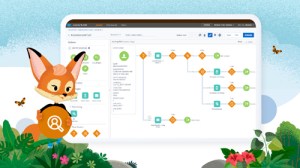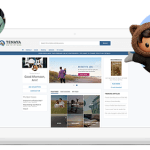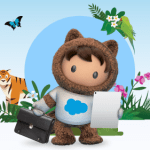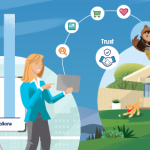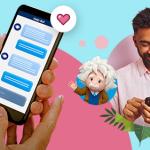With inputs from Sumit Sharma, Lead Solution Engineer
As today’s digital-savvy customers move between platforms and devices, brands mustoffer a personalised and enjoyable customer journey across channels to maximise client lifetime value. However, there are some questions you need to ask yourself to deliver cross-channel personalised experiences:
- Who is the customer?
- Where are they in their journey?
- Are you engaging with them meaningfully to build 1-to-1 relationships?
To answer these questions, you need an in-depth view of the customer journey, and must act on the changing demands of the customers.With the help of Salesforce Marketing CloudJourney Builder, you can get a unified view of all the interactions a customer has with your brand, and optimise end-to-end customer journeys.
What is a Journey Builder?
Salesforce Journey Builder gives you visibility into consumer interactions across all of your marketing channels, including email, mobile, social ads, and more. By connecting these different actions or conversations, you canunderstand the customer better, improve message building, design and automate campaigns, provide a seamless customer experience,and secure customer loyalty. In short, you candesign more effective customer journeys by tailoring interactions through the customer life cycle.
The different interactions that a customer can have with the brand at any point in the customer journey include:

- Clicking on an ad
- Opening an email
- Buying a product or availing of a service
- Returning a previously purchased product
- Conversing with a customer care representative
- Downloading a white paper
- Redeeming a coupon
In addition to being event-driven and helping start conversations with customers based on their history, location, preferences, and real-time behaviour, Journey Builder also supports visual journeys. It can visually map and execute customer journeys – whether simple or complex.  However, it is not a standalone product. Journey Builder operates within Marketing Cloud and uses the content and audiences you produce in Email Studio, Mobile Studio, Advertising Studio, Content Builder and Audience Builder.
However, it is not a standalone product. Journey Builder operates within Marketing Cloud and uses the content and audiences you produce in Email Studio, Mobile Studio, Advertising Studio, Content Builder and Audience Builder.
How does Journey Builder work?
Journey Builder uses event-driven triggers to help you meaningfully react to prospects or customers. Events can be anything the customer does that is relevant, such as downloading an app or a product fact sheet, leaving a shopping cart unattended, enrolling in a loyalty programme, or activating a beacon in a physical location. These events and their reactions to them are all part of the customer journey, which grows longer and more detailed with each encounter. By accessing information about the consumer and their behaviour, the solution enables the right action to be taken in real-time.
Journey Builder includes handy features such as:
- Easy-to-use drag and drop interface
- Entry and filter criteriato help you move through steps quickly
- A variety of powerful add-ons, such as lead scoring for Salesforce Marketing Cloud by SalesWings or Litmus to assure email compatibility.
Want to see Journey Builder in action?



How does Journey Builder help you create a smooth customer experience?
1. Guiding the customer journey
Use valuable data from any source, including customer behavioural traits, browsing patterns, and purchase history, to create personalised messaging. Using these targeted messages, you can nudge the customerson their journey using ‘in-the-moment’ eventssuch as mobile app downloads, purchases or closed service cases.
2. Unifying messaging across channels
Journey Builder can be integrated with Salesforce Service Cloud, Commerce Cloud and Sales Cloud. This means that all the departments—sales, marketing, commerce, and service— are unified on one platform and are a part of the complete customer journey. This allows for a consistent experience and communication between different departments. This also enables seamless brand communication through all available channels — such as email, SMS, push notifications, ads, web landing pages, and apps — resulting in an exceptional cross-channel customer experience.
3. Adjusting to the customers’ changing needs
By setting and maintaining automated journey logic, you can anticipate changes in consumer behaviour and take proactive steps. For example, let’s say a long-time customer recently purchased a shirt from your website. You have the transaction history and know their preferences from previous purchases. Clearly, you will share recommendations and information about similar shirts with the customer. But the thing is, they have moved on! They are looking to buy a hat now, and unless you pick up on the right behavioural and browsing cues and understand this changed need, you will continue to show more shirts to them and miss out on a possible new sale. Journey Builder prevents this from happening.
Plus, use reporting for performance reviews and trend analysis to take appropriate action at the right time. You can also scale up your activities to create simple or complex customised journeys for millions of users.
4. Leveraging distributed marketing
Create a branded journey that is consistent with corporate brand guidelines across all email, advertising, and mobile media. Share consumer journeys with owners, franchisees, advisors etc and enable them to craft the right digital marketing strategies.
By creating a 1-to-1 customer experience, Salesforce Journey Builder enables you to construct both straightforward and complex customerjourneys, resulting in increased customer satisfaction and retention.
Want to see Journey Builder in action?



